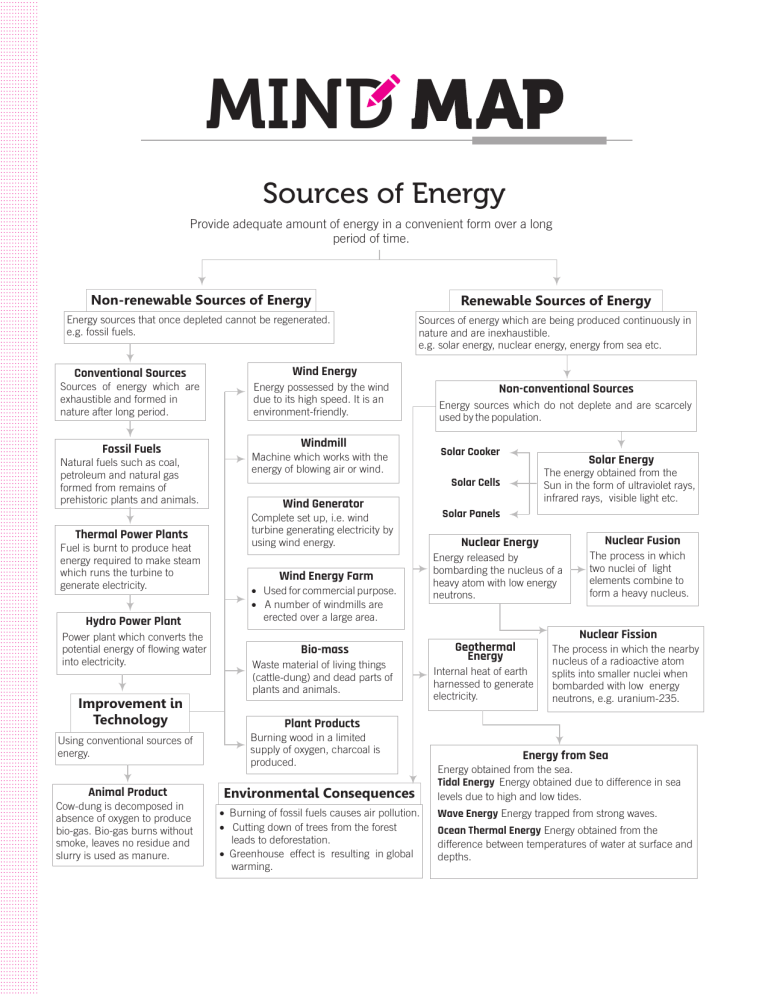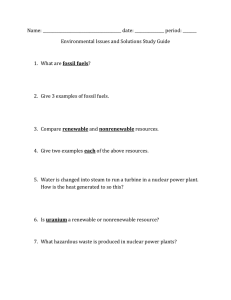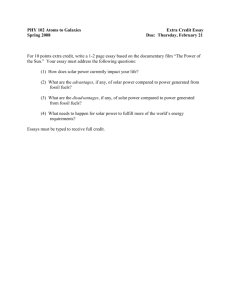
MIND Sources of Energy Provide adequate amount of energy in a convenient form over a long period of time. Non-renewable Sources of Energy Renewable Sources of Energy Energy sources that once depleted cannot be regenerated. e.g. fossil fuels. Sources of energy which are being produced continuously in nature and are inexhaustible. e.g. solar energy, nuclear energy, energy from sea etc. Wind Energy Conventional Sources Sources of energy which are exhaustible and formed in nature after long period. Energy possessed by the wind due to its high speed. It is an environment-friendly. Windmill Fossil Fuels Machine which works with the energy of blowing air or wind. Natural fuels such as coal, petroleum and natural gas formed from remains of prehistoric plants and animals. Wind Generator Complete set up, i.e. wind turbine generating electricity by using wind energy. Thermal Power Plants Wind Energy Farm ● ● Hydro Power Plant Solar Energy The energy obtained from the Sun in the form of ultraviolet rays, infrared rays, visible light etc. Used for commercial purpose. A number of windmills are erected over a large area. Solar Panels Nuclear Fusion Nuclear Energy Energy released by bombarding the nucleus of a heavy atom with low energy neutrons. The process in which two nuclei of light elements combine to form a heavy nucleus. Nuclear Fission Power plant which converts the potential energy of flowing water into electricity. Bio-mass Waste material of living things (cattle-dung) and dead parts of plants and animals. Improvement in Technology Geothermal Energy Internal heat of earth harnessed to generate electricity. The process in which the nearby nucleus of a radioactive atom splits into smaller nuclei when bombarded with low energy neutrons, e.g. uranium-235. Plant Products Burning wood in a limited supply of oxygen, charcoal is produced. Using conventional sources of energy. Animal Product Solar Cooker Solar Cells Fuel is burnt to produce heat energy required to make steam which runs the turbine to generate electricity. Cow-dung is decomposed in absence of oxygen to produce bio-gas. Bio-gas burns without smoke, leaves no residue and slurry is used as manure. Non-conventional Sources Energy sources which do not deplete and are scarcely used by the population. Environmental Consequences ● ● ● Burning of fossil fuels causes air pollution. Cutting down of trees from the forest leads to deforestation. Greenhouse effect is resulting in global warming. Energy from Sea Energy obtained from the sea. Tidal Energy Energy obtained due to difference in sea levels due to high and low tides. Wave Energy Energy trapped from strong waves. Ocean Thermal Energy Energy obtained from the difference between temperatures of water at surface and depths.




